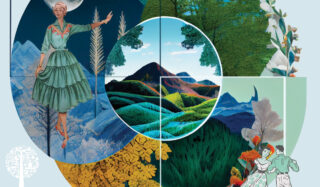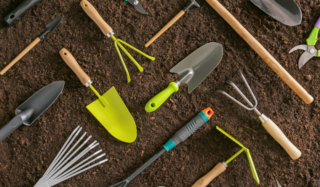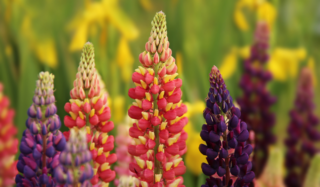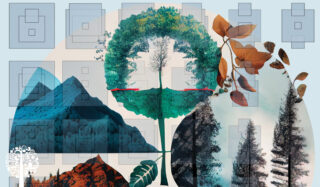Calling The Cultivation Dance: The Cycles Take The Square
If you’re a millennial in the United States, modern western square dance was likely the country’s official dance in the year you were born. For all those who’ve shared an evening (or a school physical education class period) kicking up their heels in time to a hoedown, let’s explore how we might incorporate the noncompetitive and fun spirit of the Square Dance into our dance strategies.

So often, we growers put a lot of pressure on ourselves to control environments, create timelines, and follow perfectly laid plans for efficiency and output. As a result, we can be demanding, ambitious, and highly emotionally invested.
To an observer, square dance is variously predictable and creative, repetitive yet changeable. The floor area is divided into one or more squares, where groups of partners may meet, exchange places, travel together, join with other pairs or singles in seemingly limitless combinations, and, depending on skill level, play games or experiment with the form.
In a given space, let’s say a garden marked out in dimensional feet, each square might host its own fraction of your vision as a whole. While you are involved and can influence the inhabitants of the space through your choices, it’s ultimately not up to you to grow from a seed into a plant or transform from a mass of mycelia into fruiting mushrooms.
As a cultivator, you might imagine yourself as a square dance caller. The best you can do is see potential, provide opportunity, cheer, coax, and call instructions – you can change the music, and even the players, in attempts to provide tunes and tempos that harmonize well with those others present. It can be a humbling and delightful place to be, acting from a vantage point both participatory and supervisory; you’re at the dance, but it’s not really about you.
Providing Prompts: You make the Call, but will they Listen?
Your instructions can be as creative, inventive, or traditional as befits the occasion and the group. You will use your improvisational skills to adjust for the dancers’ abilities, skill levels, and styles.
Elocution, Pitch, Rhythm, and Timing are the foundation of a caller’s skillset. Each can be related to overseeing and guiding a garden to its full potential.
Elocution
Developing a clear voice in communicating with your cultivars is key: chaotic, complicated, or uncertain instructions are difficult to follow. This can be accomplished with tidy workspaces and clean lines, using assertive actions like aligning your planting with a grid. It allows you to communicate where you want specific things to take hold at the beginning of life and where, if planting below ground or out of sight deep inside an inoculated log or grow bag, you expect to find them at harvest time.
“Square ’em Up!”
Inviting the dancers into the arena, you clasp the mic and signal the band. “Greet your partners,” you encourage, preparing the substrates and starting materials to meet.
You don’t know where the season will take you at this stage. It might be a triumph or fall apart; you develop confidence with your style, honed through practice and a willingness to try new things. When attention is on you to lead, you have to negotiate dynamically with those who have agreed to follow; they’ll only move how you want them to if the instructions are clear and result in fun for everyone.
Whether practising controlled environment agriculture on a rotation of your choosing or working outside within a given set of climactic conditions, you have groups of basic elements to consider and coordinate. Time and Space are divided into manageable parts, with periods for dancers to recover from their activity.
Individual growing days, weeks, or months make up a setlist of songs. Each subset of time, even if it repeats (e.g. the lunar cycle leading up to the Summer solstice), has its own character. The same song played twice by live musicians, even those most professional and practised, with every string tightened and tuned, imparts a unique experience.

Think of the combination of the hands, tools, machines, and other instruments employed in the space (e.g. trowels, seeders, fans, de/humidifiers, carts, misters, etc.) as the band. These are your support, and you rely on them to be predictable.
The music kicks in and all move in time with the beat, sharing a pace and a pulse, gathering momentum and becoming increasingly lively, buoyant, and celebratory.
Pitch
How high or low your voice sounds is its pitch. For example, consider how the pitch of your voice changes when you are stressed and rushed – does it go up? Do your instructions come out squeaky or broken? The opposite is true when you are calm and relaxed – your pitch is lower and easier on the ears.
Not to overly anthropomorphise nonhuman garden occupants, but this pitch can be ‘heard’ in the sense of pace – pushing for ever faster growth, or trying to make things happen before the conditions are ready, drives this pitch higher. At some point, the message receivers may be unable to keep up, become confused, and stop responding as they wish.
Friendship Set to Music
In this kind of dance, the ultimate effect is lovingly coordinated chaos. Given a familiar structure, community agreement on terms and definitions, and limited to the specifics of locale and spacetime, rogues still have to throw things out of synch to challenge the flow with missteps or distractions.
Egos, ruthless competition, showing off, and rushing has no place here. As your garden’s caller, you can identify peaks and valleys of resources used, the phases of growth each of your targeted cultivars are in, and how these relate to any other observable ecosystem inhabitants.
For example, suppose you notice a symptom of nutritional deficiency, signs of aggressive overpopulation by generally unhelpful insects (Mites! Aphids!) or other pests. In that case, you can seek to correct this imbalance holistically by giving attention to it. Using an amplified voice (in this case, the power of selected amendments or techniques), you can intervene with admonishment or encouragement.
Send me an “Angel”
Throughout the growing season, seemingly infinite cycles may occur and intersect. For as many single plants you may harvest, the ways and means by which they matured and developed had a great deal to do with the activities of unseen microbes, organic chemicals, minerals, and other organisms sharing the space.
There will never be a perfect group, but experienced dancers (your “Angels”) can demonstrate to beginners, leading by example. Imagine these as your perennials, perhaps your favourite perpetually-harvested propagants, or the permuting presence of various micro- and macro-fungi and ‘phytes.

In each square, aim to have at least some Angels who will help keep things on track. Even in a highly-sanitised, nearly inert growing space, including a familiar cultivar or two in the rotation can be beneficial. Since you know what to expect from these plants or variants of fungi (e.g. a specific strain of oyster mushroom you’ve grown before in the space), it will be easier to tell if your calls are coming through clearly depending on how they respond.
In wilder, regenerative growing ecosystems, the friendships forged are intergenerational; life cycles of different lengths turn and the peak of one supports the emergence of another.
Market gardeners and perpetual harvesters actively stagger these cycles in their squares. Those who brew their microbial teas and craft KNF inputs will also notice that their source materials are often existing in the part of their life cycles just in advance of the one being experienced by the target of those amendments.
Practising “chop and drop”, re-introducing indigenous microorganisms after multiplying them, and cultivating beds of staggered blooming plants to maintain food sources and homes for beneficial insects, are other ways that your calls can reach their intended audiences.
The ecosystemic and biochemical processes involved are stunningly beautiful and not always necessary to understand to be enjoyed. The environment is enriched by diversity because the players can see and learn the “steps” from one another. Seeing these cycles in each square, dancers are supported by having those ‘in front’ of them travel a path clear of obstacles and can be mimicked.
Rhythm and Timing: Finding the Groove
Especially when working in a regenerative environment, each observable cycle builds on a previous one and intersects with untold others. Your skill level as a caller will improve each time you witness the successful completion of a circuit. This is primarily a measure of the pleasure and enjoyment experienced by everyone present.
In the garden, a good metric of this pleasure is abundance! Your choreography develops a rich and vital environment, promotes hearty and vigorous growth, crescendos to jubilant peaks, and makes it inviting to return and dance again.
Take any chance you get to release a shared, hearty, exclamatory cheer at the sheer thrill of coming together in performance with your cultivation collaborators!





